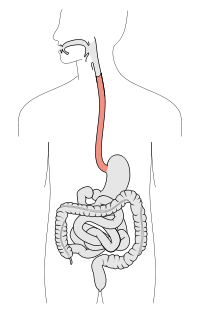
Photo from wikipedia
© BMJ Publishing Group Limited 2022. No commercial reuse. See rights and permissions. Published by BMJ. DESCRIPTION A middleaged postmenopausal woman presented with abdominal distension and dull aching nonlocalising abdominal… Click to show full abstract
© BMJ Publishing Group Limited 2022. No commercial reuse. See rights and permissions. Published by BMJ. DESCRIPTION A middleaged postmenopausal woman presented with abdominal distension and dull aching nonlocalising abdominal pain for a month, and sonography of the abdomen was advised for the same. A moderate amount of ascites was seen on sonography with congestive hepatomegaly and dilated inferior vena cava (IVC) and hepatic veins. More strikingly, dilated and tortuous anechoic vascular structures are seen in the pelvis, which could be traceable along the course of gonadal veins on either side. On review of her medical records, there was a significant history of rheumatic heart disease and its treatment course, including mitral balloon valvuloplasty done at separate time intervals in 2004 and 2006. Metallic mitral valve replacement was considered in 2016 due to the recurrence of symptoms. She improved clinically and was kept on medical treatment, viz. digoxin 0.25 mg, torsemide 20 mg, metoprolol tartrate 50 mg, aspirin 325 mg, nicoumalone 2 mg. Her recent echocardiography report showed dilated atria, severe tricuspid regurgitation ('tricuspid regurgitation velocity max (TRV max) 3.3 m/s, peak gradient (PG) 42.70 mm Hg), pulmonary hypertension, global left ventricular hypokinesia and severe left ventricular systolic dysfunction (ejection fraction 20%–25%). Aortic valve was mildly thickened with presence of mild aortic regurgitation and normally functioning mechanical prosthetic mitral valve. Chest radiograph showed cardiomegaly with prominent pulmonary conus. Right sided cardiac chambers were dilated. Contrastenhanced CT revealed abdominopelvic venous varices involving the bilateral gonadal veins, bilateral iliac veins (common, internal and external), IVC and hepatic veins with the presence of right internal iliac venous aneurysm measuring 4.4×4.3×3.6 (anteroposterior×craniocaudal×transverse) cm (figure 1). Mild bilateral lower extremity pitting oedema was seen. However, no varicose veins or chronic cutaneous changes to suggest deep venous thrombosis were seen.
Journal Title: BMJ Case Reports
Year Published: 2022
Link to full text (if available)
Share on Social Media: Sign Up to like & get
recommendations!